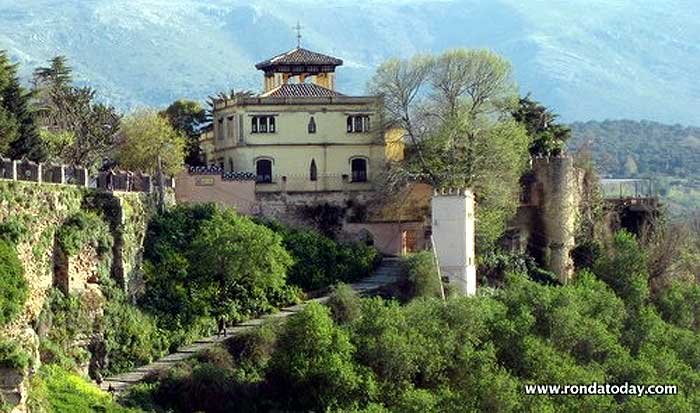The Puente Nuevo is one of Ronda’s most famous landmarks, in fact the bridge is one of the most photographed manmade structures in Spain. The interpretation museum is inside the bridge, in the large room under the road. At various times this has been a prison, a hotel, and a bar.
Getting to Ronda using tour guide companies
Looking for the best way to visit Ronda?
While most travelers arrive by car, train, or bus, guided tours are a stress-free alternative. For trusted options, Get Your Guide offers some of the best tours to and around Ronda.
Nuestra Señora del Socorro
The parish church of Socorro (Parroquia de Nuestra Señora del Socorro) was only built in 1956 but it, and the plaza around it, feature prominently on every walking tour of Ronda. The ground on which the church stands was the location of a parish chapel, a hospital, and before that a Muslim chapel.
The Camino del Rey – El Chorro and Guadalhorce Reservoirs
If you’re road-tripping through Andalucía, don’t miss the breathtaking Guadalhorce reservoirs, El Chorro, and the famous Caminito del Rey—just an hour from Ronda. This stunning area in Málaga province is perfect for a scenic detour or an overnight stay.
Ronda, the City of Dreams in Andalucia
Welcome to Ronda the “City of Dreams”. Ronda is one of the most popular white towns in southern Spain, known for its dramatic scenery and historic charm. This compact hilltop city is easy to explore on foot. Stroll along cobbled streets as you visit iconic sites like the Real Maestranza bullring, the Puente Nuevo and the breathtaking El Tajo Gorge.
In Ronda you will discover beautiful churches, museums, and wonderful tapas bars and restaurants.
Thinking of staying in Ronda? Find a hotel
As well as being blessed with some of Spain’s most impressive natural and historic monuments, the accommodation options in Ronda are excellent because many offer views of the Tajo gorge from their windows and balconies plus the stunning views of the mountains surrounding the city.
Four star hotels in Ronda include the Parador, Molino del Arco, Reina Victoria, Montelirio, Maestranza, Acinipo, Ronda Valley, and Hotel San Gabriel.





